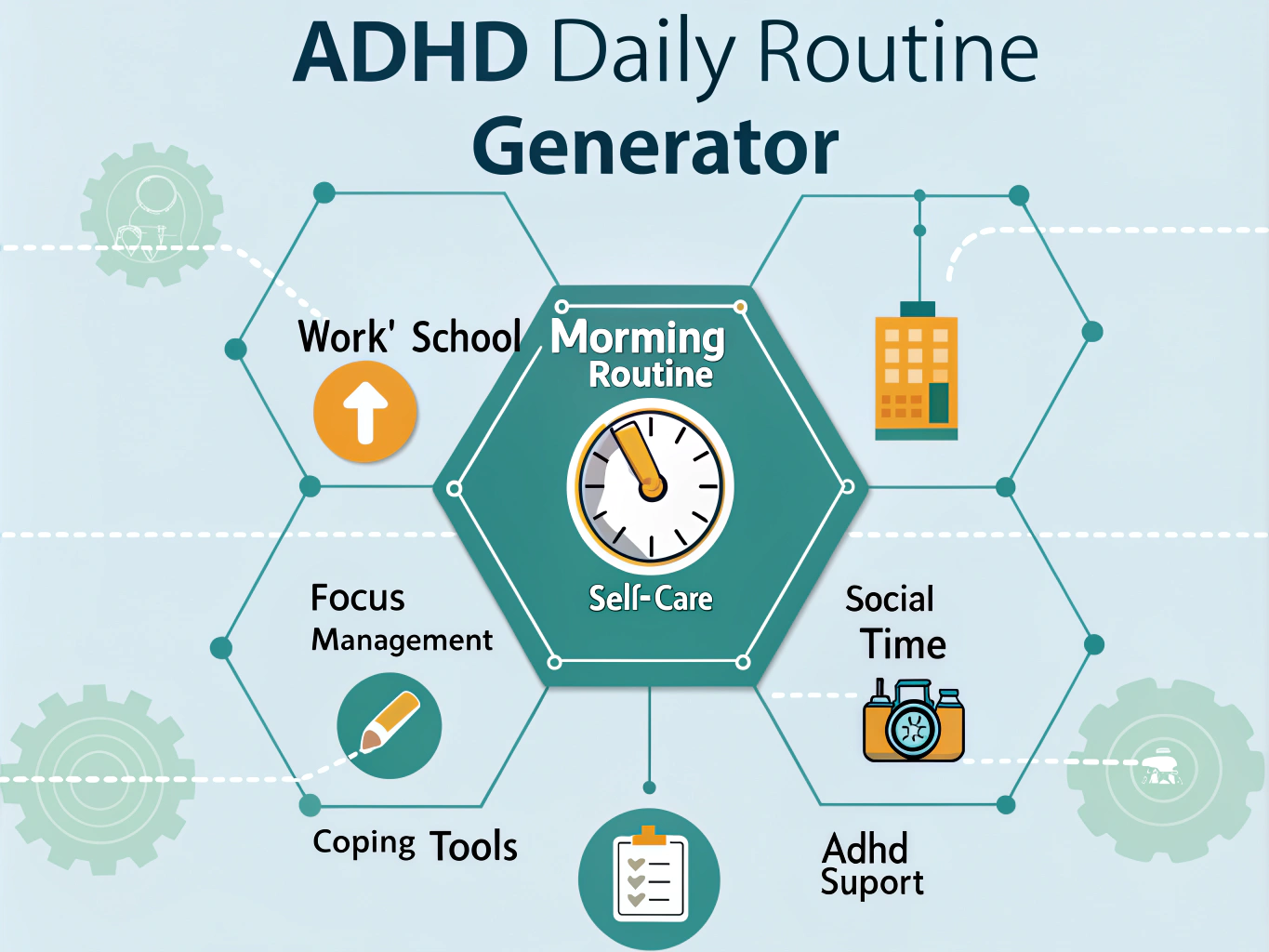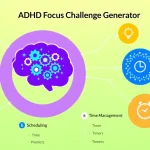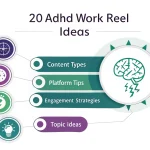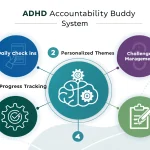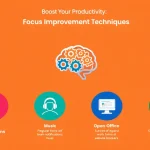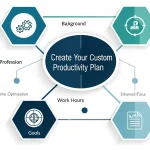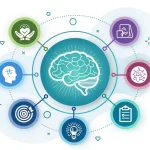ADHD Daily Routine Generator
Is this tool helpful?
How to Use the ADHD Daily Routine Generator Effectively
The ADHD Daily Routine Generator is a powerful tool designed to help individuals with Attention Deficit Hyperactivity Disorder (ADHD) create a structured and personalized daily routine. To use this tool effectively, follow these steps:
- ADHD-Specific Details (Optional): In the first field, enter any specific ADHD-related challenges or details you’d like to address in your daily routine. For example, you might input “Difficulty with task prioritization” or “Struggles with maintaining focus during long meetings.”
- Daily Routine Structure: Specify how you’d like your daily routine to be structured. This could be “Chronological” for a time-based breakdown of your day, or “By activity type” to group similar tasks together. For instance, you might enter “Chronological with emphasis on transition periods” or “Activity-based with focus on energy management.”
- Coping Strategies (Optional): List any specific coping strategies or tools you’d like to incorporate into your routine. Examples could include “Body doubling for difficult tasks” or “Use of visual timers for time management.”
- Generate Your Routine: Click the “Generate ADHD Daily Routine” button to create your personalized daily routine based on the information you’ve provided.
- Review and Copy: Once generated, review your personalized ADHD daily routine. If you’re satisfied, use the “Copy to Clipboard” button to easily save or share your routine.
By providing detailed and specific information in each field, you’ll receive a more tailored and effective daily routine that addresses your unique ADHD challenges and incorporates your preferred coping strategies.
Understanding the ADHD Daily Routine Generator: Your Personal Roadmap to Success
Living with Attention Deficit Hyperactivity Disorder (ADHD) can make daily life feel like navigating a complex maze without a map. The ADHD Daily Routine Generator is designed to be your personal GPS, guiding you through the twists and turns of each day with a structured, personalized routine that addresses your unique challenges and leverages your strengths.
This innovative tool combines the latest research in ADHD management with customizable inputs to create a comprehensive daily plan that helps individuals with ADHD navigate their responsibilities, manage their symptoms, and achieve their goals. By providing a clear, step-by-step breakdown of daily activities, the generator helps reduce the overwhelm and decision fatigue that often accompany ADHD, allowing users to focus their energy on what truly matters.
The Science Behind Structured Routines for ADHD Management
Research has consistently shown that individuals with ADHD benefit significantly from structured routines. A study published in the Journal of Attention Disorders found that implementing consistent daily routines was associated with improved symptom management and overall quality of life for adults with ADHD. The ADHD Daily Routine Generator builds on this evidence-based approach, offering a personalized solution that adapts to each user’s specific needs and challenges.
Customization: The Key to Effective ADHD Management
One of the unique features of the ADHD Daily Routine Generator is its high level of customization. By allowing users to input specific ADHD-related challenges, preferred routine structures, and favored coping strategies, the tool creates a truly personalized plan. This tailored approach ensures that the generated routine is not just a generic schedule, but a powerful tool that resonates with the individual’s experiences and needs.
Benefits of Using the ADHD Daily Routine Generator
Incorporating the ADHD Daily Routine Generator into your life can yield numerous benefits, both in managing ADHD symptoms and improving overall quality of life. Here are some key advantages:
1. Reduced Cognitive Load and Decision Fatigue
For individuals with ADHD, making decisions throughout the day can be mentally taxing and lead to decision fatigue. By providing a clear, pre-planned routine, the generator significantly reduces the number of decisions you need to make on a daily basis. This frees up cognitive resources for more important tasks and helps maintain focus throughout the day.
2. Improved Time Management and Productivity
The structured routine created by the generator helps users allocate appropriate time for various tasks and activities. This can lead to improved time management skills and increased productivity. A study in the Journal of Clinical Psychology found that adults with ADHD who implemented structured time management techniques showed significant improvements in task completion and reduced procrastination.
3. Enhanced Emotional Regulation
Predictability and structure can help individuals with ADHD better regulate their emotions. By knowing what to expect throughout the day, users may experience reduced anxiety and stress levels. The routine can also incorporate specific strategies for emotional regulation, such as scheduled breaks or mindfulness practices.
4. Better Habit Formation
Consistency is key in forming new habits, which can be challenging for individuals with ADHD. The daily routine generator provides a framework for consistently implementing positive habits, whether it’s regular exercise, medication adherence, or dedicating time to important personal or professional tasks.
5. Increased Self-Efficacy and Confidence
As users successfully follow their personalized routine and accomplish daily tasks, they may experience increased self-efficacy and confidence. This positive reinforcement can be particularly beneficial for individuals with ADHD, who may have struggled with feelings of inadequacy or low self-esteem due to past difficulties in managing daily responsibilities.
6. Improved Work-Life Balance
The ADHD Daily Routine Generator helps users allocate time for various aspects of life, including work, personal care, social interactions, and leisure activities. This comprehensive approach promotes a healthier work-life balance, which is crucial for overall well-being and long-term success in managing ADHD.
7. Better Sleep Hygiene
Many individuals with ADHD struggle with sleep issues. The routine generator can incorporate strategies for improving sleep hygiene, such as consistent bedtimes and pre-sleep routines. Better sleep quality can, in turn, lead to improved focus and symptom management during waking hours.
Addressing User Needs: How the ADHD Daily Routine Generator Solves Specific Problems
The ADHD Daily Routine Generator is specifically designed to address the unique challenges faced by individuals with ADHD. Let’s explore how this tool tackles some of the most common issues:
1. Task Initiation and Procrastination
Many individuals with ADHD struggle with getting started on tasks, often leading to procrastination. The routine generator addresses this by breaking down the day into manageable chunks and providing clear starting points for each activity. For example, instead of a vague task like “work on project,” the generator might specify “9:00 AM – Start on project: outline first three sections.”
2. Time Blindness
Time blindness, or difficulty perceiving the passage of time, is a common ADHD symptom. The structured routine provides time anchors throughout the day, helping users stay on track. It might suggest using visual timers or alarms to mark the beginning and end of each time block, reinforcing time awareness.
3. Hyperfocus and Task Switching
While hyperfocus can be beneficial, it can also lead to neglecting other important tasks. The generated routine includes regular breaks and transition periods to help users shift between activities. For instance, it might recommend a 5-minute stretching break between tasks to reset focus and prepare for the next activity.
4. Executive Function Challenges
ADHD often impacts executive functions like planning, organizing, and prioritizing. The routine generator takes on these executive tasks by creating a clear, prioritized schedule. It might organize tasks based on energy levels, scheduling high-priority, complex tasks during peak focus hours and reserving lower-energy periods for routine activities.
5. Medication Management
For those using ADHD medication, timing can be crucial. The routine can incorporate medication reminders and schedule activities to align with peak medication effectiveness. For example, it might suggest taking medication 30 minutes before starting work to ensure optimal focus during important tasks.
6. Sensory Overload and Burnout Prevention
Many individuals with ADHD are sensitive to sensory input and prone to burnout. The generator can include regular “sensory breaks” or quiet time in the routine. It might suggest a 15-minute period of noise-cancelling headphone use after lunch to prevent afternoon overstimulation.
Practical Applications: Real-World Examples of the ADHD Daily Routine Generator in Action
To illustrate the versatility and effectiveness of the ADHD Daily Routine Generator, let’s explore some real-world scenarios where it can make a significant difference:
Scenario 1: The Busy Professional
Sarah, a marketing executive with ADHD, struggles with balancing multiple projects and meeting deadlines. Her generated routine might look like this:
- 7:00 AM – Wake up, 10-minute meditation
- 7:30 AM – Quick workout and shower
- 8:30 AM – Review daily goals and prioritize tasks
- 9:00 AM – Start work: Focus on high-priority project (use Pomodoro technique)
- 11:00 AM – Check and respond to urgent emails (set 30-minute timer)
- 12:00 PM – Lunch break with a short walk
- 1:00 PM – Team meeting (use fidget toy for focus)
- 2:30 PM – Deep work session on creative tasks
- 4:30 PM – Wrap up daily tasks, plan for tomorrow
- 6:00 PM – Personal time: hobby or social activity
- 9:00 PM – Wind-down routine, limit screen time
- 10:00 PM – Bedtime
This routine helps Sarah manage her workload, incorporate breaks to prevent burnout, and maintain a healthy work-life balance.
Scenario 2: The College Student
Alex, a college student with ADHD, struggles with maintaining focus during lectures and completing assignments on time. His generated routine might include:
- 8:00 AM – Wake up, morning exercise
- 9:00 AM – Breakfast and medication
- 10:00 AM – First class (use voice recorder for notes)
- 12:00 PM – Lunch and social time
- 1:00 PM – Study session using active recall techniques
- 3:00 PM – Second class (sit near front, use fidget cube)
- 5:00 PM – Break: physical activity or club meeting
- 7:00 PM – Dinner and short rest
- 8:00 PM – Homework session (use body doubling with study buddy)
- 10:00 PM – Plan next day, pack bag
- 11:00 PM – Relaxation and bedtime routine
This routine helps Alex stay on top of his academic responsibilities while incorporating ADHD-friendly study techniques and necessary breaks.
Scenario 3: The Work-from-Home Parent
Michael, a freelance writer with ADHD and a parent of two young children, struggles with balancing work and family responsibilities. His generated routine might look like:
- 6:30 AM – Wake up, quick yoga session
- 7:00 AM – Help kids get ready for school
- 8:30 AM – School drop-off
- 9:00 AM – Start work: writing sprint (use website blocker)
- 11:00 AM – Break: house chores and snack
- 11:30 AM – Client calls and emails
- 1:00 PM – Lunch and short walk
- 2:00 PM – Deep work session (use noise-cancelling headphones)
- 3:30 PM – School pickup and kids’ activities
- 5:30 PM – Family dinner and quality time
- 7:30 PM – Kids’ bedtime routine
- 8:30 PM – Final work check and next day planning
- 9:30 PM – Personal relaxation time
- 10:30 PM – Bedtime
This routine helps Michael manage his work responsibilities while ensuring he has quality time with his family and maintains personal well-being.
Frequently Asked Questions (FAQ)
1. How often should I update my ADHD daily routine?
It’s recommended to review and adjust your routine every few weeks or whenever there’s a significant change in your life circumstances. This allows you to fine-tune the routine based on what’s working well and address any new challenges that arise.
2. Can I use this tool if I haven’t been officially diagnosed with ADHD?
While the ADHD Daily Routine Generator is designed with ADHD in mind, anyone who struggles with organization, time management, or maintaining a consistent routine can benefit from using this tool. It’s always best to consult with a healthcare professional for an official diagnosis and personalized treatment plan.
3. How can I ensure I stick to the generated routine?
Consistency is key when implementing a new routine. Start by focusing on one or two key elements of the routine at a time, rather than trying to change everything at once. Use visual reminders, set alarms on your phone, or enlist the support of a friend or family member to help you stay accountable.
4. Can this tool be used alongside other ADHD management strategies?
Absolutely! The ADHD Daily Routine Generator is designed to complement other ADHD management strategies, such as medication, therapy, or cognitive behavioral techniques. In fact, incorporating multiple strategies often leads to the best outcomes in managing ADHD symptoms.
5. How detailed should my inputs be when using the generator?
The more specific and detailed your inputs, the more tailored and effective your generated routine will be. Don’t hesitate to include specific challenges, preferences, or strategies that have worked for you in the past. This information helps the generator create a truly personalized routine.
6. Can I generate multiple routines for different types of days?
Yes, you can use the generator multiple times to create different routines for workdays, weekends, or any other specific scenarios you encounter regularly. Having multiple routines can help you maintain structure across various aspects of your life.
7. How do I handle unexpected disruptions to my routine?
While having a routine is beneficial, it’s important to remain flexible. When disruptions occur, try to return to your routine as soon as possible. You can also include “buffer time” in your routine to account for unexpected events or transitions between activities.
8. Can this tool help with long-term goal setting and achievement?
While the primary focus of the ADHD Daily Routine Generator is on daily activities, consistently following a well-structured routine can significantly contribute to long-term goal achievement. You can incorporate steps towards your long-term goals into your daily routine, ensuring steady progress over time.
By leveraging the power of the ADHD Daily Routine Generator and consistently applying the personalized strategies it provides, individuals with ADHD can transform their daily lives, boost productivity, and move confidently towards their goals. Remember, the key to success lies not just in having a routine, but in consistently refining and adhering to it as you grow and your needs evolve.
Important Disclaimer
The calculations, results, and content provided by our tools are not guaranteed to be accurate, complete, or reliable. Users are responsible for verifying and interpreting the results. Our content and tools may contain errors, biases, or inconsistencies. We reserve the right to save inputs and outputs from our tools for the purposes of error debugging, bias identification, and performance improvement. External companies providing AI models used in our tools may also save and process data in accordance with their own policies. By using our tools, you consent to this data collection and processing. We reserve the right to limit the usage of our tools based on current usability factors. By using our tools, you acknowledge that you have read, understood, and agreed to this disclaimer. You accept the inherent risks and limitations associated with the use of our tools and services.
